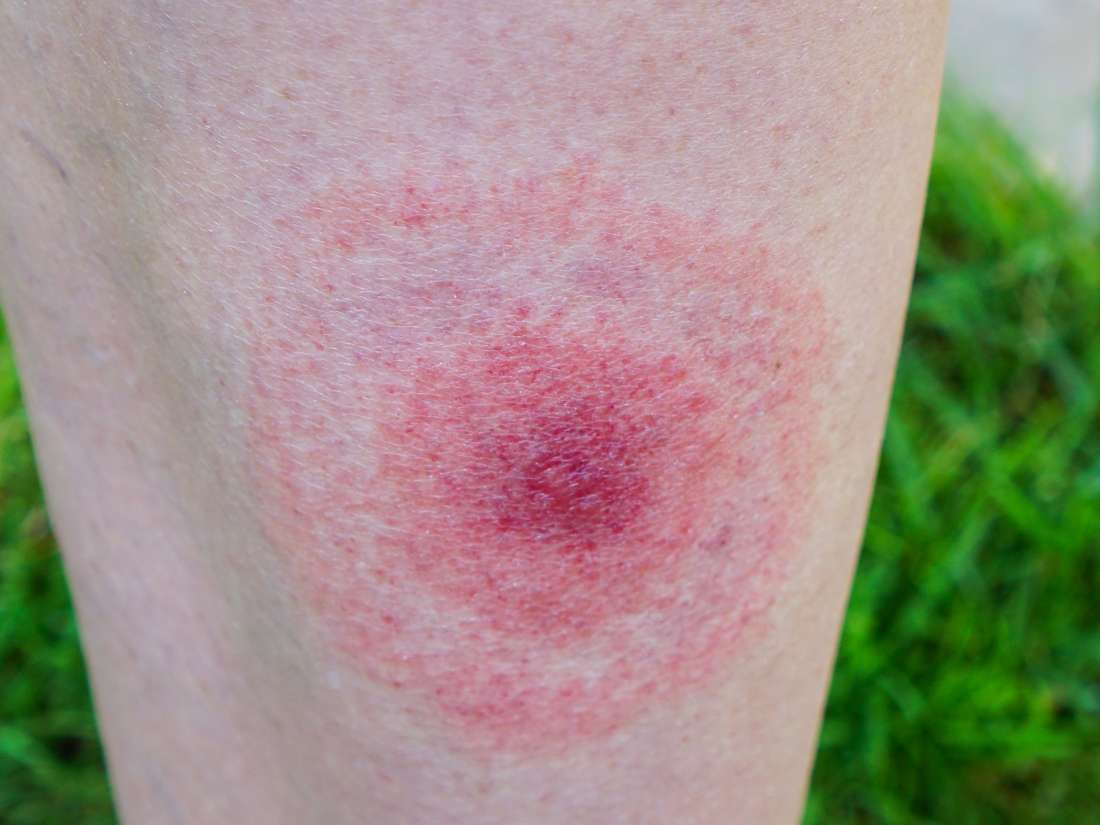Understanding The Uncomfortable Reality Of Lyme Burning Skin
Experiencing a burning sensation in the skin is one of the more distressing symptoms associated with Lyme disease, a condition that continues to challenge medical professionals and patients alike. This symptom, often referred to as "lyme burning skin," can be both mysterious and debilitating. Understanding its causes, manifestations, and treatment options is essential for those who suffer from it. As Lyme disease becomes increasingly prevalent, it's crucial to delve deeper into its complexities and how it affects the body's largest organ—the skin.
Lyme disease, transmitted primarily through tick bites, is notorious for its wide range of symptoms that can affect multiple systems in the body. Among these symptoms, the sensation of burning skin has been reported by many patients. This symptom can be a result of inflammation, nerve damage, or other underlying issues caused by the disease. By examining the science behind this condition, we can better understand why some individuals experience this unique discomfort.
As awareness grows about Lyme disease, more people are seeking answers about the less-discussed symptoms like lyme burning skin. This article aims to provide comprehensive insights into the condition, offering guidance for those affected and their caregivers. Whether you're newly diagnosed or seeking additional resources, the information provided here is designed to empower you with knowledge and potential solutions.
Read also:Unveiling The World Of Hindix A Comprehensive Guide
What Causes Lyme Burning Skin?
One of the primary questions patients have is about the origin of this uncomfortable sensation. Lyme disease triggers an immune response in the body, which can lead to inflammation and nerve damage. This inflammation is often responsible for the burning sensation experienced by some patients. The bacteria that cause Lyme disease, Borrelia burgdorferi, can invade tissues and disrupt normal bodily functions, leading to these distressing symptoms.
How Does Lyme Disease Affect the Skin?
The skin is often the first line of defense against pathogens, but it can also be a battleground when infected with Lyme disease. The bacteria can cause erythema migrans, a characteristic rash associated with Lyme disease, but beyond this visible sign, the skin may experience other changes. Nerve endings in the skin can become inflamed or damaged, leading to sensations like burning or tingling. Understanding these mechanisms is key to managing the condition effectively.
Can Lyme Burning Skin Be Prevented?
While prevention of Lyme disease itself involves avoiding tick bites, managing the symptoms once contracted requires a different approach. Early diagnosis and treatment can mitigate some of the long-term effects, including skin-related issues. However, for those already experiencing lyme burning skin, prevention might involve managing inflammation and protecting nerve health through diet, supplements, and other interventions. Exploring these options can help reduce discomfort and improve quality of life.
Is There a Cure for Lyme Burning Skin?
Currently, there is no specific cure for the burning sensation associated with Lyme disease. However, treatment strategies can alleviate symptoms and improve overall health. Antibiotics are often the first line of defense against the infection itself, but for persistent symptoms, additional therapies may be necessary. These could include pain management techniques, physical therapy, and lifestyle changes that support nerve and skin health.
Understanding the Science Behind Lyme Burning Skin
Delving deeper into the science can help clarify why some individuals experience this symptom. Research indicates that the immune response triggered by Lyme disease can lead to chronic inflammation, which in turn affects nerve function. This inflammation can result in the sensation of burning or tingling in the skin, particularly in areas where nerve endings are densely packed. By understanding the biological processes at play, healthcare providers can develop more effective treatment plans.
What Role Do Nerves Play in Lyme Burning Skin?
Nerves are crucial in transmitting sensory information to the brain, and when they are damaged or inflamed, they can send incorrect signals, leading to sensations like burning. Lyme disease can affect peripheral nerves, causing what is known as peripheral neuropathy. This condition can manifest as lyme burning skin, among other symptoms. Recognizing the role of nerve health in managing the disease is vital for long-term recovery.
Read also:Kate Hudsons Political Views Exploring Her Allegiance To Trump
Treatment Options for Lyme Burning Skin
Treatment for lyme burning skin typically involves a multi-faceted approach. Medications that reduce inflammation, such as nonsteroidal anti-inflammatory drugs (NSAIDs), can be beneficial. Additionally, therapies aimed at repairing nerve damage, such as certain supplements and physical therapies, may help alleviate symptoms. It's important to work closely with healthcare providers to tailor a treatment plan that addresses individual needs and symptoms.
Should I Seek Medical Advice for Lyme Burning Skin?
Yes, seeking medical advice is crucial if you're experiencing symptoms like lyme burning skin. A healthcare professional can provide a thorough evaluation and recommend appropriate treatments. Early intervention can prevent the condition from worsening and improve outcomes. Don't hesitate to reach out if you're concerned about your symptoms or need further guidance.
Living with Lyme Burning Skin
Living with the discomfort of lyme burning skin can be challenging, but there are strategies to help manage the condition. Developing a routine that includes regular exercise, a balanced diet, and stress-reduction techniques can support overall health and reduce symptom severity. Additionally, connecting with support groups and other Lyme disease sufferers can provide emotional support and practical advice.
Managing Stress and Anxiety
Stress and anxiety can exacerbate symptoms of Lyme disease, including the sensation of burning skin. Techniques such as mindfulness, meditation, and yoga can be effective in reducing stress levels. Incorporating these practices into daily life can lead to improved mental and physical well-being, helping to alleviate some of the discomfort associated with the condition.
Support Systems for Lyme Burning Skin
Having a strong support system is invaluable for those dealing with chronic illnesses like Lyme disease. Whether it's family, friends, or support groups, having people who understand and can offer assistance is crucial. Online forums and local groups can provide a platform for sharing experiences and learning from others who have faced similar challenges.
What Are Some Natural Remedies for Lyme Burning Skin?
Some individuals find relief through natural remedies, such as herbal supplements, essential oils, and dietary changes. While these methods may not be scientifically proven, they can complement conventional treatments and improve overall well-being. It's important to consult with healthcare providers before trying any new remedies to ensure they are safe and appropriate for your condition.
Conclusion
Lyme burning skin is a complex and distressing symptom that affects many individuals with Lyme disease. By understanding its causes, manifestations, and treatment options, patients can take proactive steps toward managing their condition. Whether through conventional medicine, natural remedies, or lifestyle changes, there are ways to alleviate discomfort and improve quality of life. Remember, seeking professional guidance and building a strong support network are essential components of managing this challenging condition.
Table of Contents
- What Causes Lyme Burning Skin?
- How Does Lyme Disease Affect the Skin?
- Can Lyme Burning Skin Be Prevented?
- Is There a Cure for Lyme Burning Skin?
- Understanding the Science Behind Lyme Burning Skin
- What Role Do Nerves Play in Lyme Burning Skin?
- Treatment Options for Lyme Burning Skin
- Should I Seek Medical Advice for Lyme Burning Skin?
- Living with Lyme Burning Skin
- What Are Some Natural Remedies for Lyme Burning Skin?
Article Recommendations


